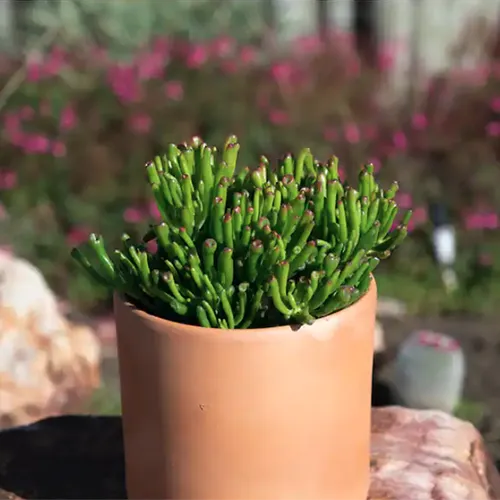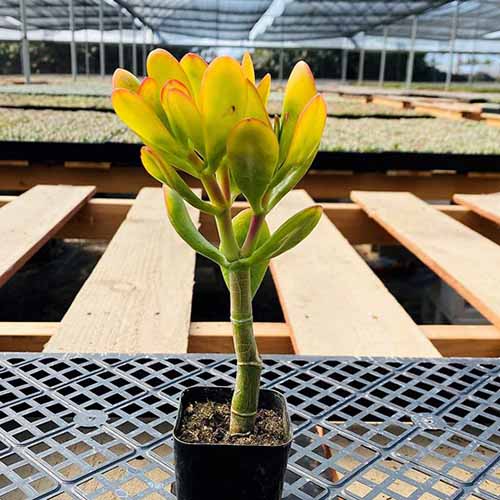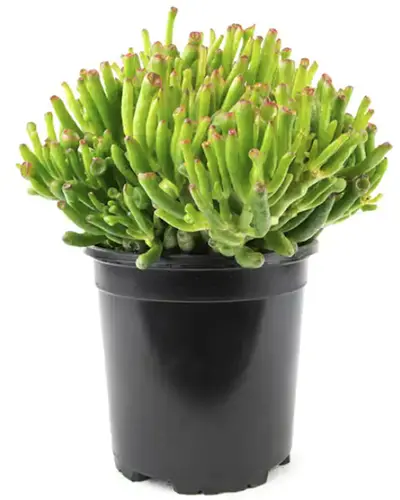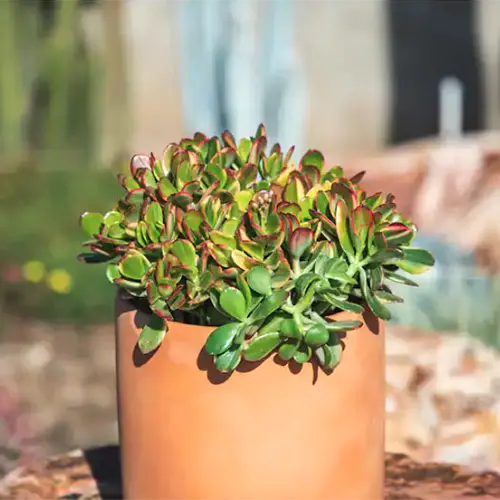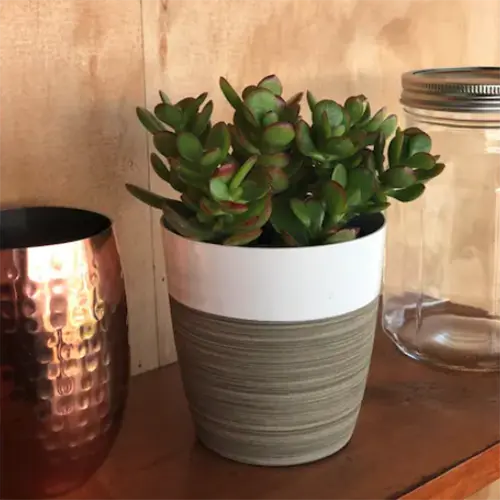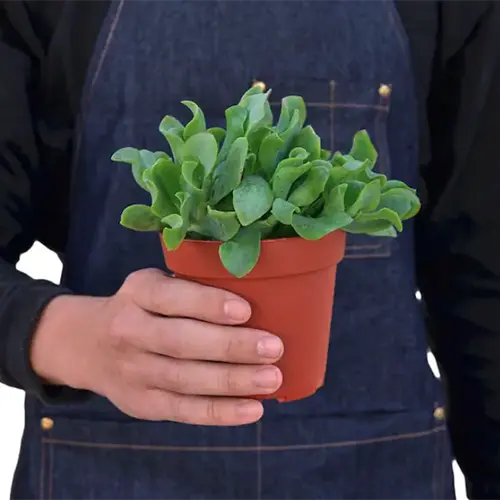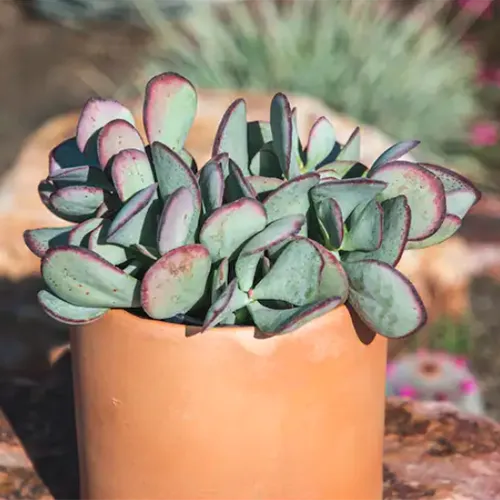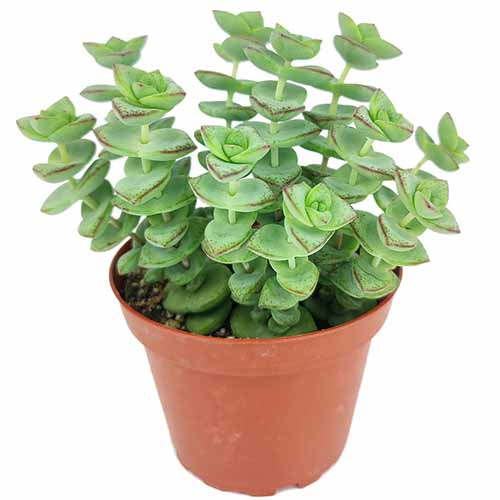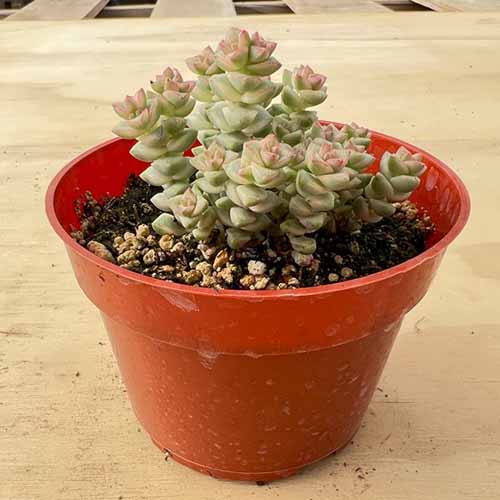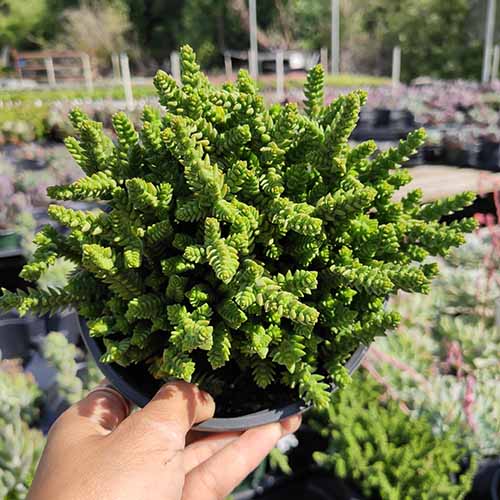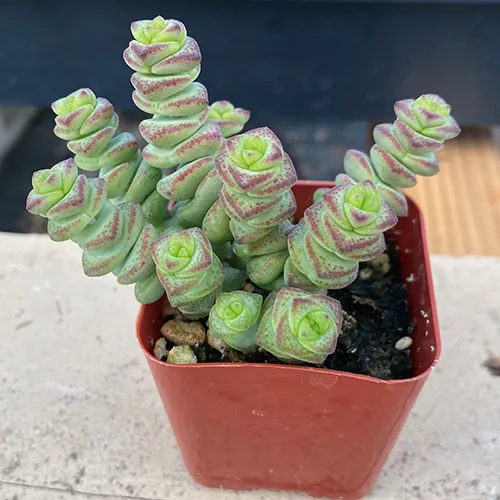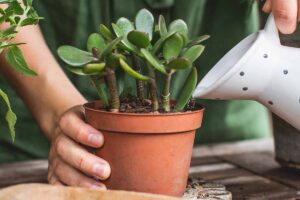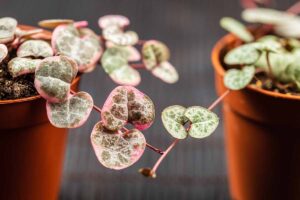I hope you’ll have as much fun growing Crassula plants as the botanists and breeders responsible for describing the many unique varieties had naming them.
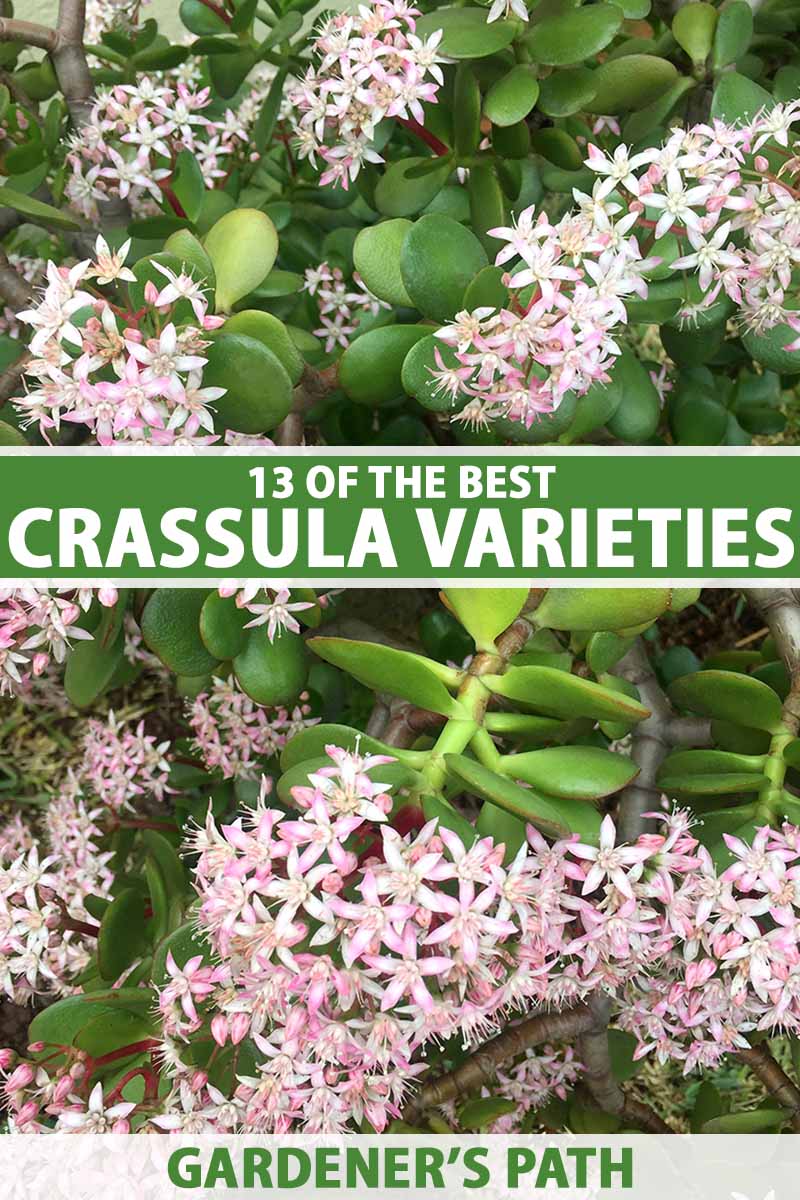
We link to vendors to help you find relevant products. If you buy from one of our links, we may earn a commission.
Watch chain? ‘Gollum?’ Calico kitten? ‘E. T. Fingers?’ They’re all here, if a Crassula is what you’re after!
Most of the common and cultivar names for crassulas have a lot of character, as do the plants themselves.
All are succulents with fleshy leaves that grow well in low humidity and bright light. And these feature a range of beautiful colors, like the variegated white and green calico kitten with its magenta markings.
Many showcase remarkable shapes in the foliage, including ‘Gollum’ with its green, fleshy “fingers” with what look like suction cups on their ends, inspiring the nickname “Shrek plant.”
In this roundup, we’ve done some of the legwork for you to make it easier to find a Crassula that will work best in your space and appeal to your sensibilities in the houseplant realm.
These selections are suitable for growing as houseplants and indoor/outdoor container specimens that enjoy the nice weather outdoors before overwintering inside.
Or perhaps you might choose one as a ground cover or border plant if you’re gardening in the warm regions where jade and other Crassula species can thrive outdoors year-round.
This is typically in USDA Hardiness Zones 10 to 11, or occasionally in Zone 9, depending on the variety. We’ve outlined the specifics for you below.
You may get a kick out of the names and some of the unusual shapes on offer with the cultivars described below, or you might fall for the beauty of one of the species plants that we’ve highlighted and end up adding it to your succulent collection.
Be sure to have fun when you make your picks!
Here are the varieties I’ll highlight in our roundup of top picks for home gardeners:
13 of the Best Types of Crassula
There’s a lot of unusually offbeat variety as well as more classically attractive looks among the most reliably available species and cultivars from the Crassula genus. Let’s take a look!
1. Calico Kitten
So, the pattern here is variegated but it only vaguely resembles calico. And these plants don’t purr, scratch, mew, or hide…
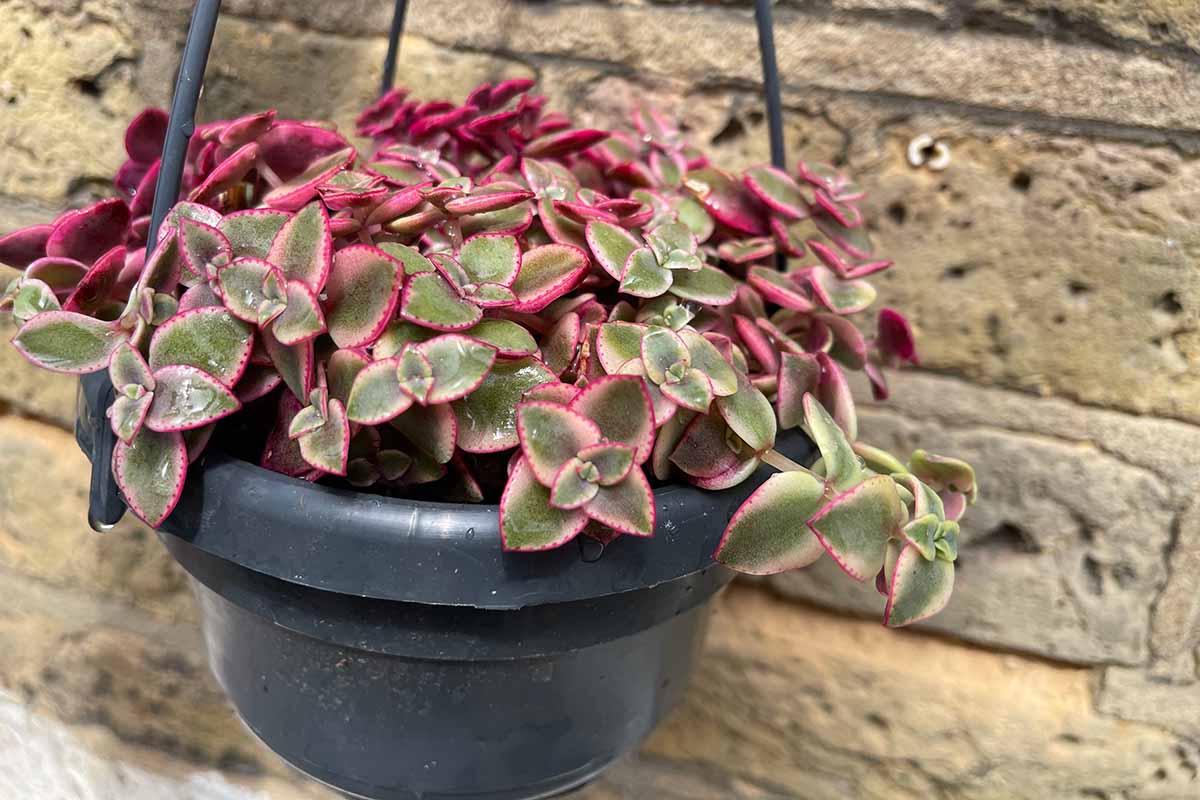
But this calico kitten, aka C. pellucida subsp. marginalis ‘Variegata,’ is a cheery, comforting, colorful pet of a plant, so maybe it’s similar to a kitten after all.
The color, with variegated light green and cream-colored leaves accented with magenta or deep pink, is unusual among succulents.
It’s also one of the few dwarf crassulas, reaching a maximum of nine to 12 inches tall, even when it’s grown outdoors in Zones 10 to 11.
If the leaves receive extra sun, beyond the recommended minimum four hours of full sun daily outdoors or six hours of bright light inside, they may become stressed and the pink accents may deepen.
Another fun aspect of this mini-succulent is the structure of the leaves, which are heart-shaped and stacked on narrow stems.
These begin growing upwards, but the weight of the leaves eventually causes the stems to bend and trail from planters, or spill over the ground as a succulent ground cover outdoors.
These diminutive, patterned crassulas are far simpler to tend than their kitten namesake. All they need is ample light and well-draining soil, and to be kept out of freezing weather.
They reproduce like cats, too – but only if you want lots more calico kittens around! Stem and leaf cuttings are both easy to propagate, and far simpler to find homes for than felines.

Two- and four-inch pots or bare roots plants are available from Succulents Box via Amazon.
2. E. T. Fingers
I would so happily phone home if I thought there was an ‘E. T. Fingers’ waiting for me there.
Like ‘Gollum,’ another type of crassula with a name inspired by an amphibious-looking fictional character that we’ll cover later, this is likely a cultivar of the C. ovata species.
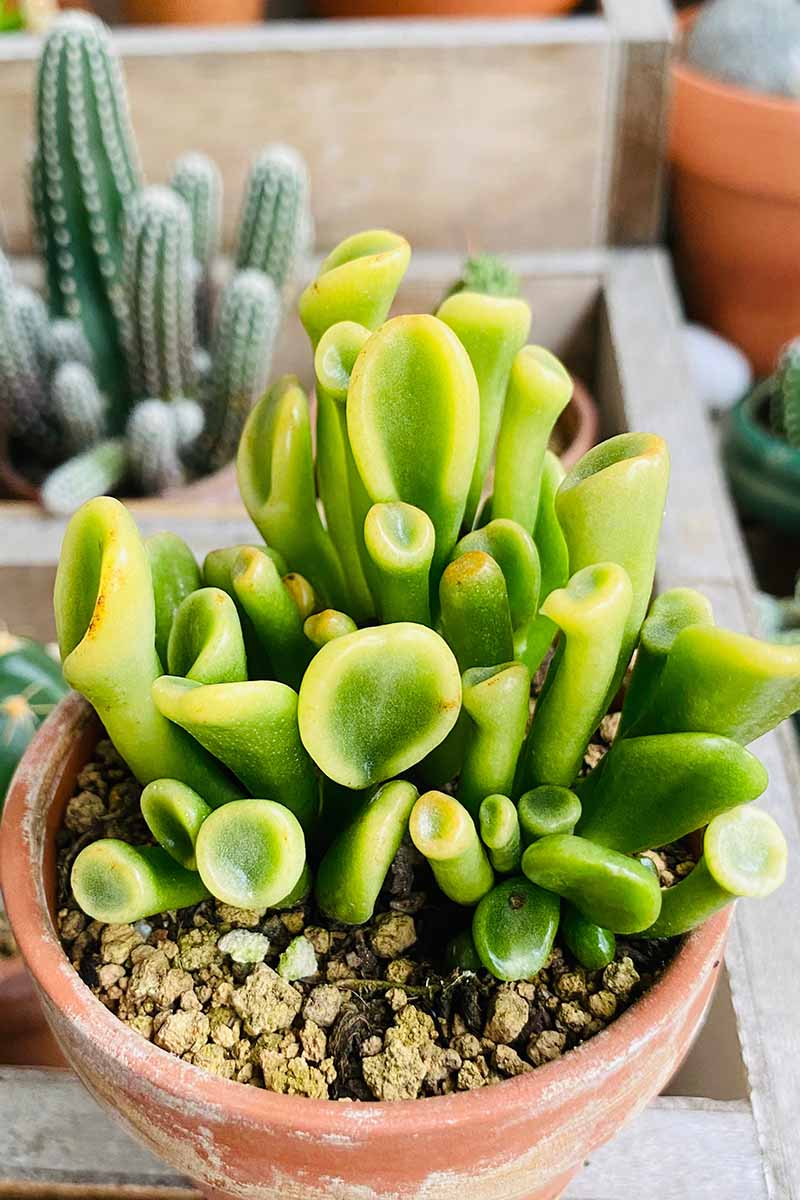
This hybrid features tubular green stems that form a small shrub about three feet tall outdoors in Zones 9 to 10.
As a full-time houseplant or when potted and overwintered indoors, it tends to top out at about 12 to 18 inches tall.
The “fingertips” look remarkably like suction cups, and these develop a pink or red tint in direct sunlight. The plants may produce clusters of small, white, star-shaped blooms as well, though flowering is not common indoors.
This is a quirky conversation starter when planted in a full sun to part shade border or garden bed in appropriate climates.
Or, turn on your heart light for inspiration, and see if you can’t come up with a sentimental dish garden design that features ‘E. T. Fingers,’ with a figurine of the namesake character and perhaps some extras like a telephone or bicycle figurine.
‘E. T. Fingers’ is available in one-gallon pots from Altman Plants via Home Depot.
3. Golden Jade
Golden jade, or C. ovata ‘Hummel’s Sunset,’ is one of the most vibrantly-colored crassulas on this list.
It has oval-shaped leaves about an inch or two long that turn a tawny yellow and have red tips when grown in full sun.
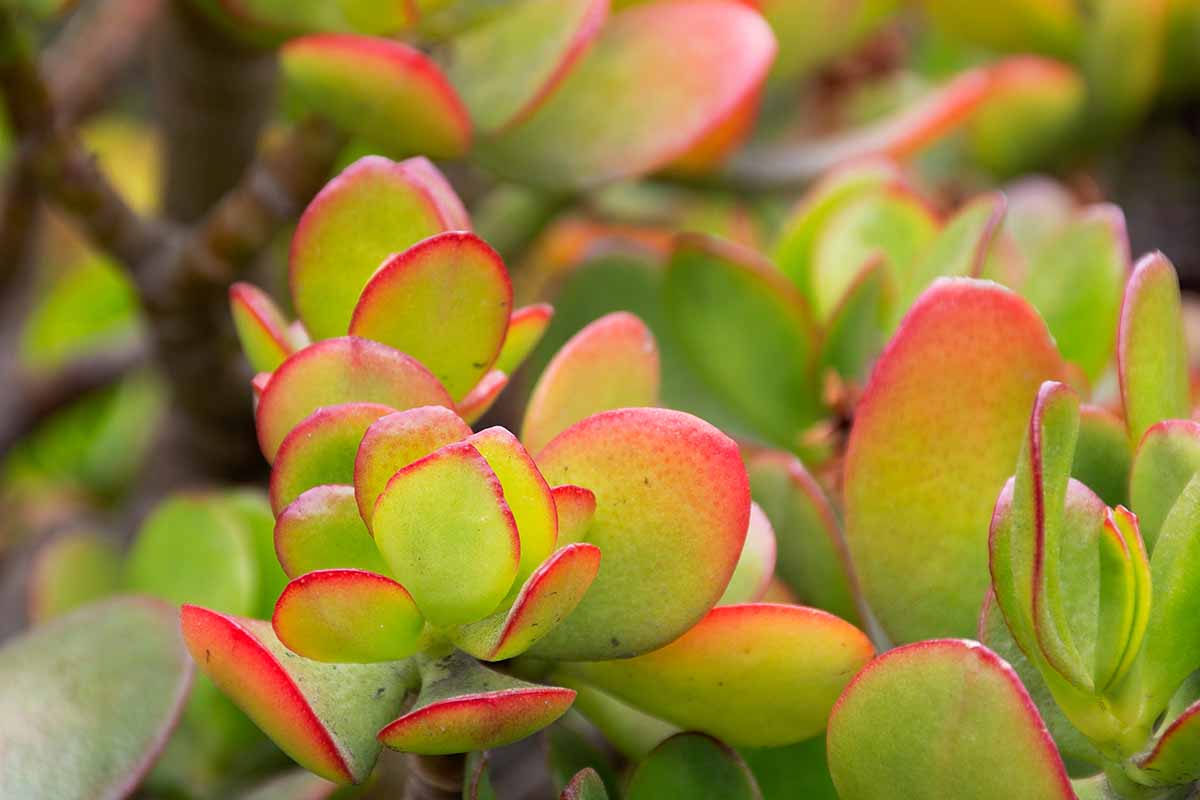
Like its more common jade-green relative, which we’ll get to in a bit, it will grow as high as six feet and produce tiny white flowers outdoors. Note that it is only cold hardy in Zones 11 and 12.
Cultivated as a houseplant year-round or overwintered indoors, it’s unlikely to bloom, and will tend to reach a maximum height of 18 to 36 inches.
The color alone makes it an appealing succulent for ground cover plantings or creating low hedges outdoors, or as a companion for darker-hued succulents like mother of millions or aloe in container gardens.
A fully-rooted eight- to 10-inch golden jade is available in a two-inch pot from The Next Gardener, Inc. via Walmart.
4. Gollum
This C. ovata cultivar is far more precious than the creepy, scrambling, fleshy character from “The Hobbit.”
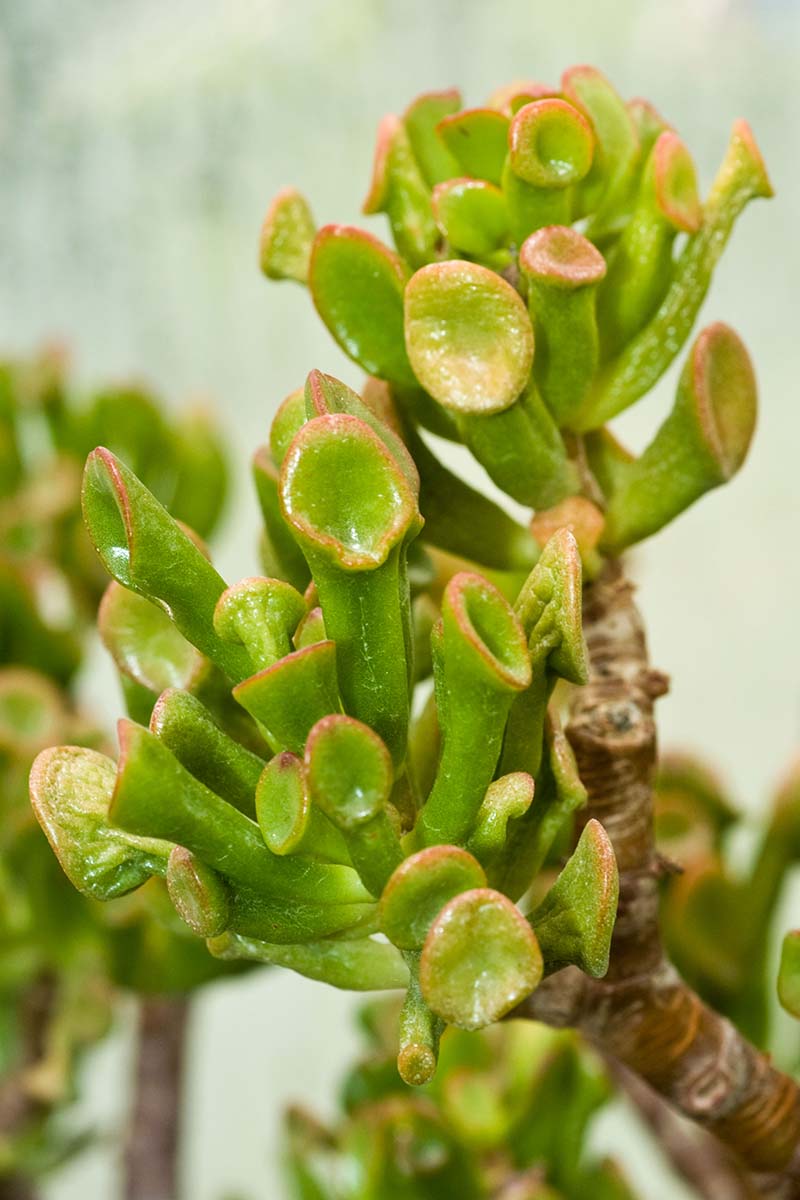
But ‘Gollum’ crassula does have tubular foliage that resembles the ring-hoarding character’s fingers – though in green, not a sickly tan.
If you grow this odd-but-fascinating crassula in bright sunlight, it may also reward you by reddening up at the tips.
Outdoors, ‘Gollum’ can reach three feet tall and spread almost as wide. Container houseplants generally attain a smaller mature stature, topping out at around 18 to 24 inches tall with a spread of 12 to 18 inches.
Grown as a houseplant or year-round outdoors, the stems will become thick and the tubes might twist into interesting shapes.
Some succulent collectors favor ‘Gollum’ for bonsai, while gardeners who can grow this variety as an outdoor perennial in Zones 10 and 11 may want to use it for ground cover or in rock gardens.
It will produce small clusters of pink or white blooms, but this is rare indoors.
‘Gollum’ is available in one-gallon pots from Altman Plants via Home Depot.
5. Lemon & Lime
As carefree as an afternoon spent sipping on the clear, bubbly summertime sodas of my youth, ‘Lemon & Lime,’ a C. ovata cultivar (sometimes referred to erroneously as C. obliqua), has refreshing colors on its two-inch leaves.
They’re bright green with ivory and yellow stripes.
Grown in brighter light, the leaves may develop a pink tinge. And planted outdoors in Zone 9 or 10, it may also burst into bloom with clusters of small white or pink flowers in the winter.
Indoors, the variegation may not be as pronounced, but the colorful stripes complement darker green succulents like aloe in a container garden. Artificial grow lights can help to boost exposure.
‘Lemon & Lime’ is available in gallon-size plastic nursery pots from Altman Plants via Home Depot.
6. Jade Plant
The most popular Crassula species, this one goes by many names. You may know it as the common jade plant, money tree, or C. ovata.
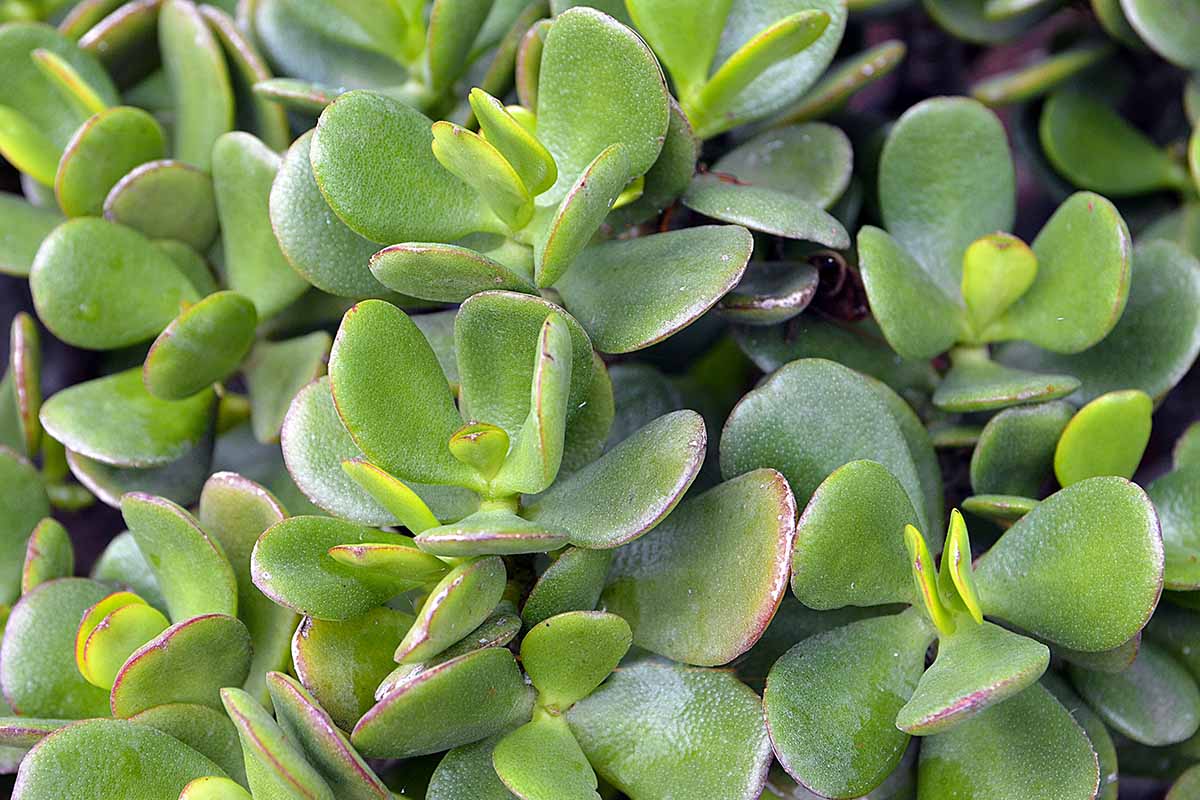
It features thick stems that start growing in a fresh green hue and become woody and brown as the plant gets older.
As it ages, jade starts to look like a miniature tree, which is a fun feature for container gardens.
These plants can reach six feet tall when grown outdoors in the ground, and they’re hardy in Zones 11 and 12. More compact when grown as houseplants, or as indoor/outdoor potted succulents that overwinter in the house, they’ll reach about 18 to 30 inches tall.
The fleshy leaves are thick and oval-shaped, and they can reach an inch or more long. They tend to be jade green, but may develop a red tint at the edges if they receive enough light.
Money trees provide an upright focal point for a succulent collection grown in a single container, or a series of pots arranged in a cluster.
Gardeners in appropriate climates can grow classic jade as a garden specimen or plant several as a low hedge.
Jade will bloom outdoors in late fall if conditions are right, with clusters of tiny, star-shaped, pink or white flowers bursting forth.
You can read more about growing and caring for jade in our guide.
Don’t confuse these with the plant commonly known as “dwarf jade” that’s often used in bonsai. Also known as elephant bush, this is another species entirely – Portulacaria afra.
Find a money plant in a four-inch ceramic pot available from Costa Farms via Home Depot.
7. Propeller Plant
This is one of the most recent additions to my personal succulent collection, but the shape of the leaves reminds me of the very first flight I embarked on long ago.
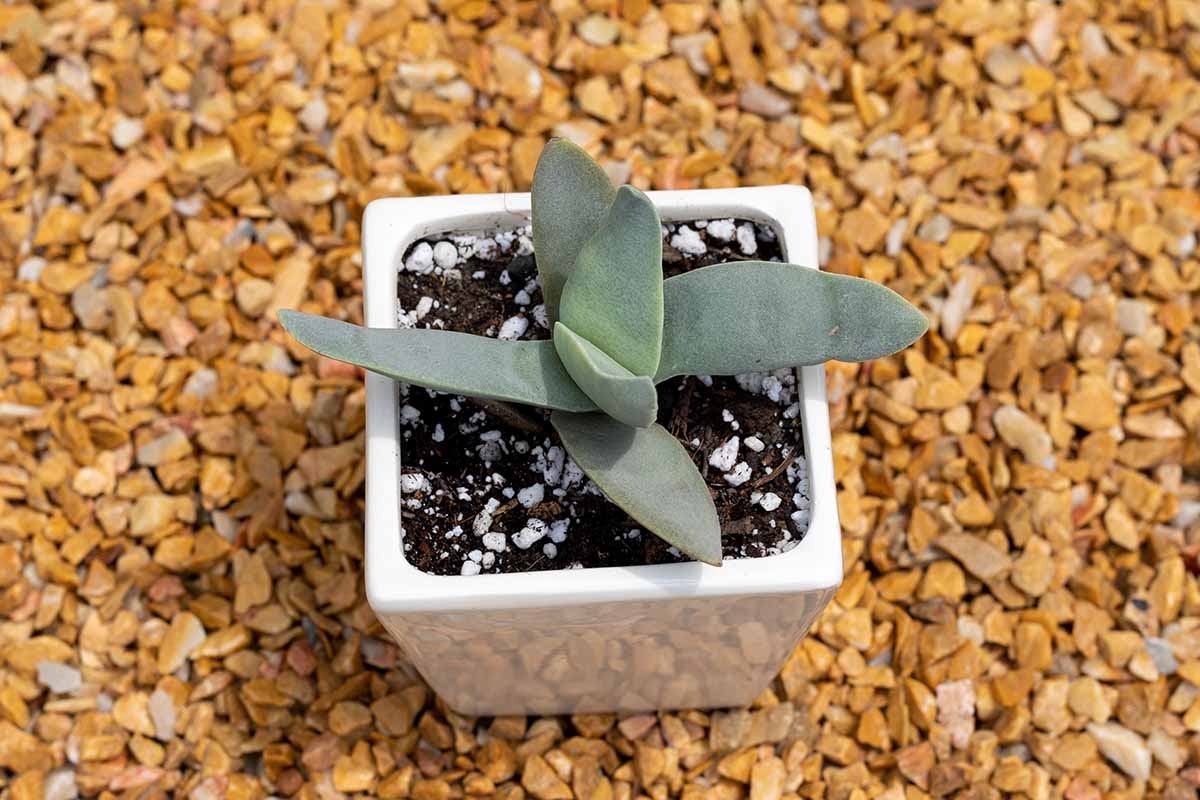
A teenage friend with a pilot’s license flew us out from the airport in Williamsburg, Virginia. We hovered over my neighborhood, where I spotted my rooftop and the neighbor’s Labrador-St. Bernard mix from the air.
The leaves of this succulent, aka C. perfoliata ssp. falcata or airplane plant, are a few inches long, about an inch wide, and propeller-shaped. They grow upright on stems that can reach two feet tall outdoors in Zones 10 to 11.
The color is a silver-green-gray, evocative of the paint job on a Boeing Grey Wolf, a multi-mission utility helicopter used by the U.S. Air Force. But the blooms on plants grown outdoors shift the narrative to a different sort of flying.
These are a bright red-orange and waft a cinnamon scent that attracts pollinators.
This makes propeller plants a top choice for container gardens positioned near vegetable patches, and it’s a good selection to grow near high-traffic walkways or outdoor kitchens, where people relaxing outdoors can enjoy the scent.

Propeller plants are available in four-inch pots from Succulents Box via Amazon.
8. Ripple Jade
I love the way ripple jade (C. arborescens ssp. undulatifolia), a subspecies of C. arborescens aka silver dollar jade, looks like a standard money tree playing dress-up.
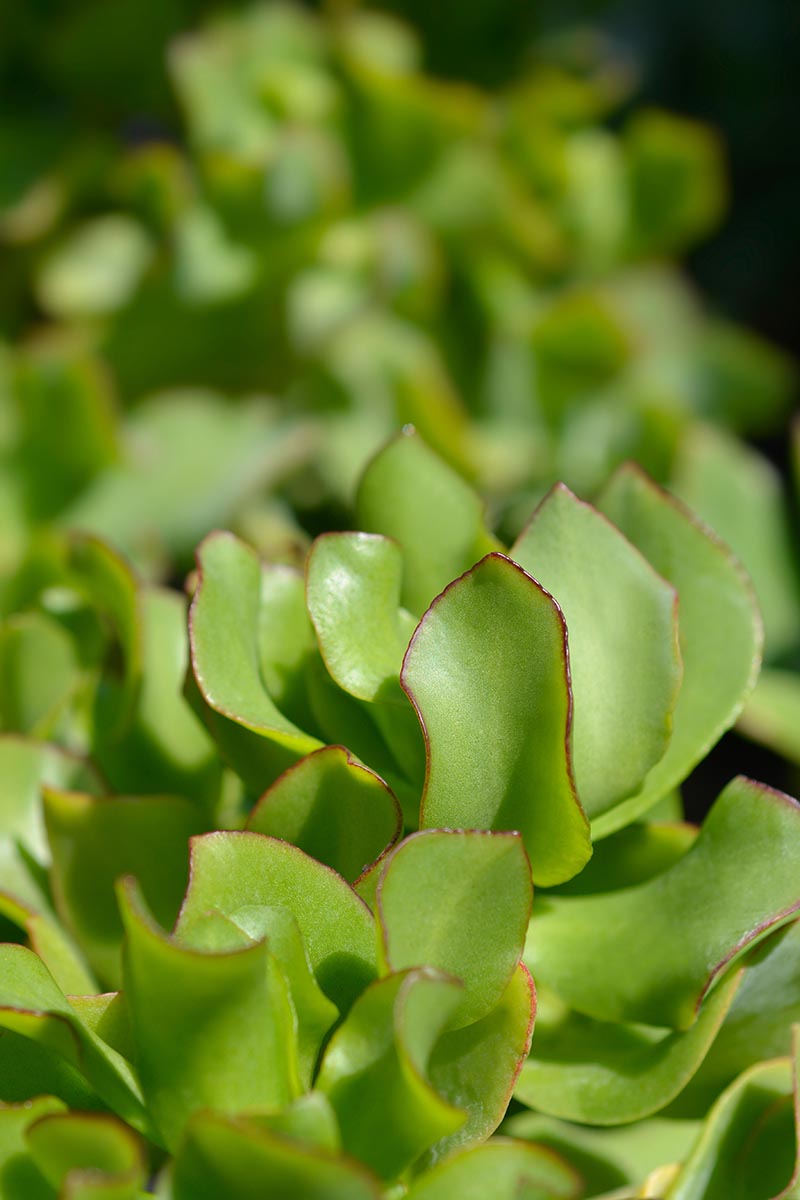
The one- to two-inch oval leaves grow from stout stems on a shrubby plant.
But they’re ripply, resembling “pink collar” shirt-front ruffles from the 1970s or the lace jabots from the Gay Nineties of the 19th century – only they’re green-blue, not white or pastel.
They may gain red edges in strong sun, however.
Ripple jade grows up to four feet tall as a perennial in Zones 11 to 12, appropriate for a low hedge or possibly ground cover outdoors. It rarely blooms in cultivation.
Inside, it reaches 12 to 18 inches tall and its gracious ruffles offer an eye-pleasing contrast to the straight edges of C. ovata. Try them together in a container!
Ripple jade is available in four-inch containers from Home Depot.
9. Silver Dollar Jade
Like the Allman Brothers singing “Midnight Rider,” if you’ve got just one more silver dollar, I sure hope it’s one of these C. aborescens plants because it’s so easy to make more – cuttings will root easily if you pluck a few of their two- to three-inch leaves.
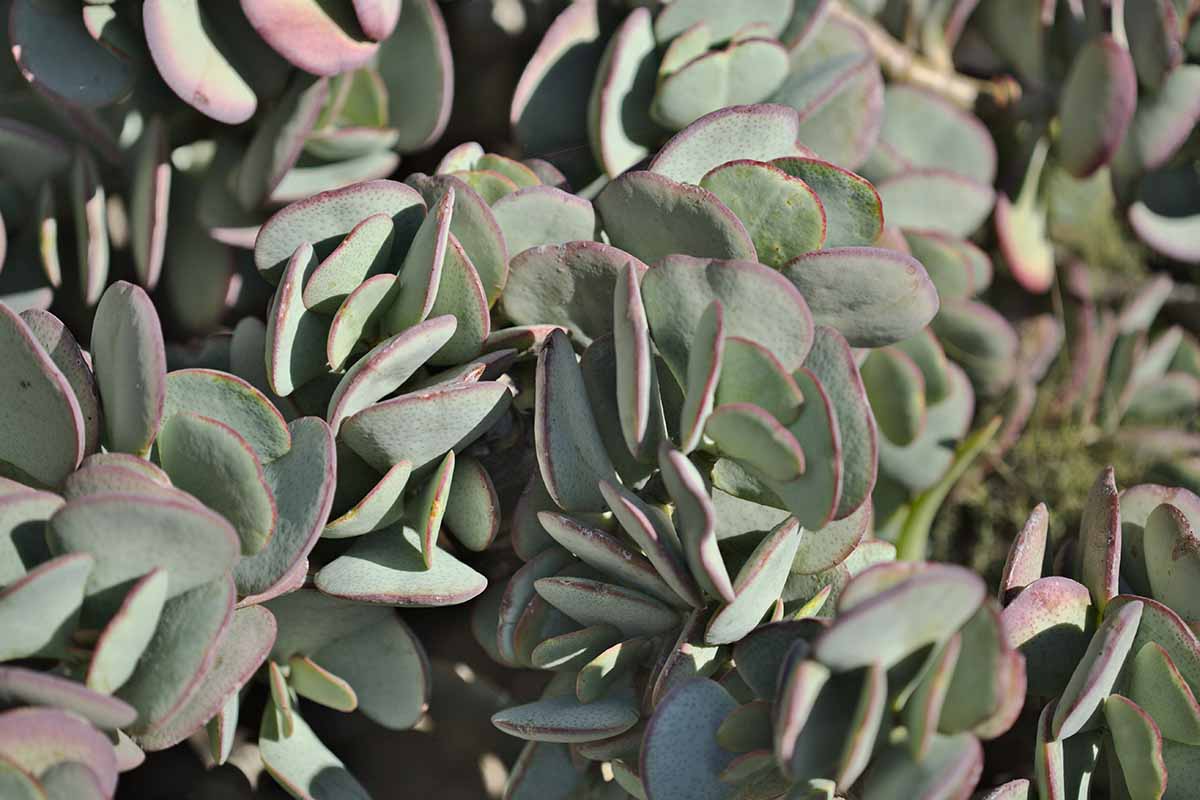
Also known as silver or Chinese jade, or the African or Brazilian rubber plant, among other common names, you could start with one specimen of this species and end up with enough of the shrubby plants to create a six-foot-tall hedge in Zones 9 to 11a.
Outdoors, they may burst into white or pink bloom in spring.
But there’s nothing wrong with propagating the leaves to start smaller houseplants to swap or use as wedding shower favors.
The plants don’t grow as tall indoors, maybe a couple of feet at most, and they are unlikely to bloom inside. But the foliage is stunning enough on its own so you won’t miss the flowers.
I prefer the nickname “silver dollar” for this plant, with its round leaves that grow almost perpendicular to the ground, resembling silver coins.
In direct sunlight outdoors, the silvery foliage may develop maroon borders. But either indoors or out, silver dollar jade is easy to care for and looks fantastic with other silvery or blue-green succulents.
I suppose the piratical might like to call these “pieces of eight jade,” but there’s no need to steal if a friend owns one and they’re willing to share!
Otherwise, silver dollar jade is available in one-gallon pots from Altman Plants via Home Depot.
10. String of Buttons
If you generally think of buttons as useful implements on work shirts, or you aspire to master the skill in pressing electronic ones that’s required if you ever want to appear on Jeopardy!, C. perforata offers a refreshing change.
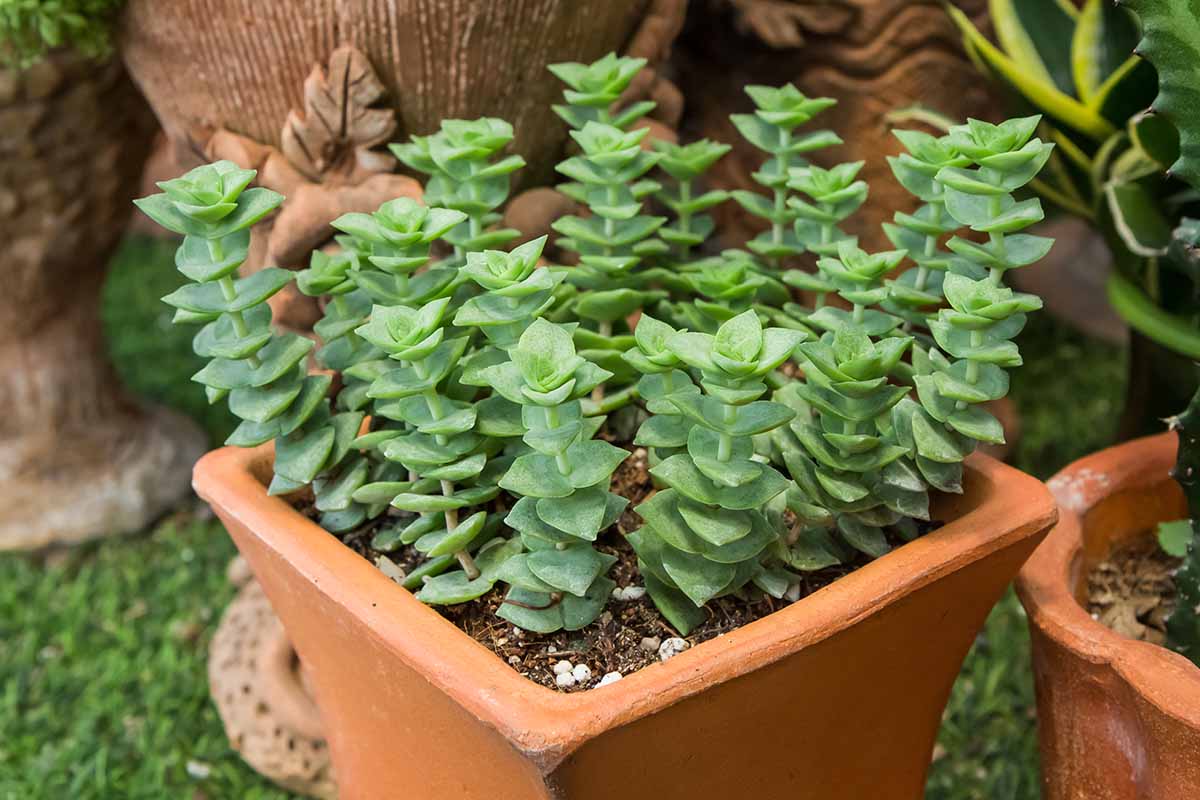
The uniform, stacked leaves that form in rosettes on long stems resemble a sizable, fancy fabric button of fuzzy, light blue-green.
More like a button you’d admire on a designer coat than the fussy, tiny ones that keep shirt collars buttoned down, these have an attractive triangular shape.
Plants reach some eight to 12 inches tall, with stems on mature plants spilling over the sides of hanging baskets placed outdoors, or near a bright window indoors. They’ll also form a full, low-lying ground cover in Zones 10 and 11.
Continuing the outerwear theme, like the piping on a military jacket, the leaves sport mahogany edges if they’re grown in bright light.
These easy-care succulents will bloom in spring outdoors with clusters of minuscule pale yellow or pink flowers. Grown indoors as houseplants, they won’t typically bloom.
Find string of buttons plants available in four-inch pots from Succulents Box via Walmart.
11. Tom Thumb
Many compact, small-space vegetable cultivars are named ‘Tom Thumb,’ including varieties of lettuce, peas, and tomatoes.
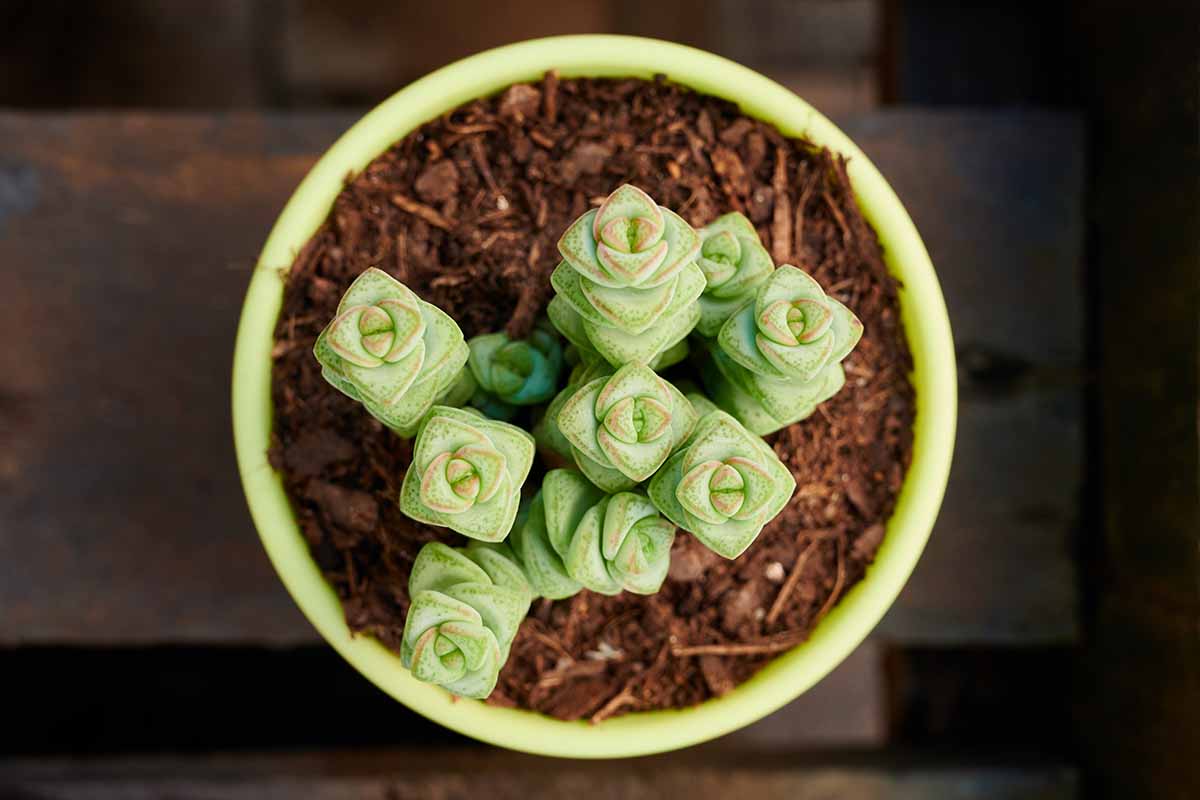
As an indoor plant or part of an outdoor succulent garden, this compact cultivar, likely with C. rupestris parentage has its own appeal. Don’t try to eat it, though!
Hardy in Zones 10 to 11, this ‘Tom Thumb’ grows eight to 12 inches tall. The stems are stacked with triangular, light green-gray leaves that are tiny – under half an inch long.
Once the stems reach four or five inches in length, they’ll start to bend under their own weight and spill attractively over the sides of a hanging container, or drape over the ground in a garden plot.
When grown in ample sun outdoors or bright light inside, these succulents will develop bright red leaf margins that look to me like Tom Thumb has been enthusiastically kissing Thumbelina right after an application of lipstick.
Its flowers will never be the main selling point, but ‘Tom Thumb’ will produce white blooms from spring to midsummer if the growing conditions are right outdoors.
Find four-inch pots of ‘Tom Thumb’ available from The Next Gardener, Inc. via Walmart.
12. Watch Chain
My dad grew up running around as a Baltimore street kid in the 1930s, but he fixed and collected a splendid selection of gold and silver pocket watches when he had more money in adulthood.
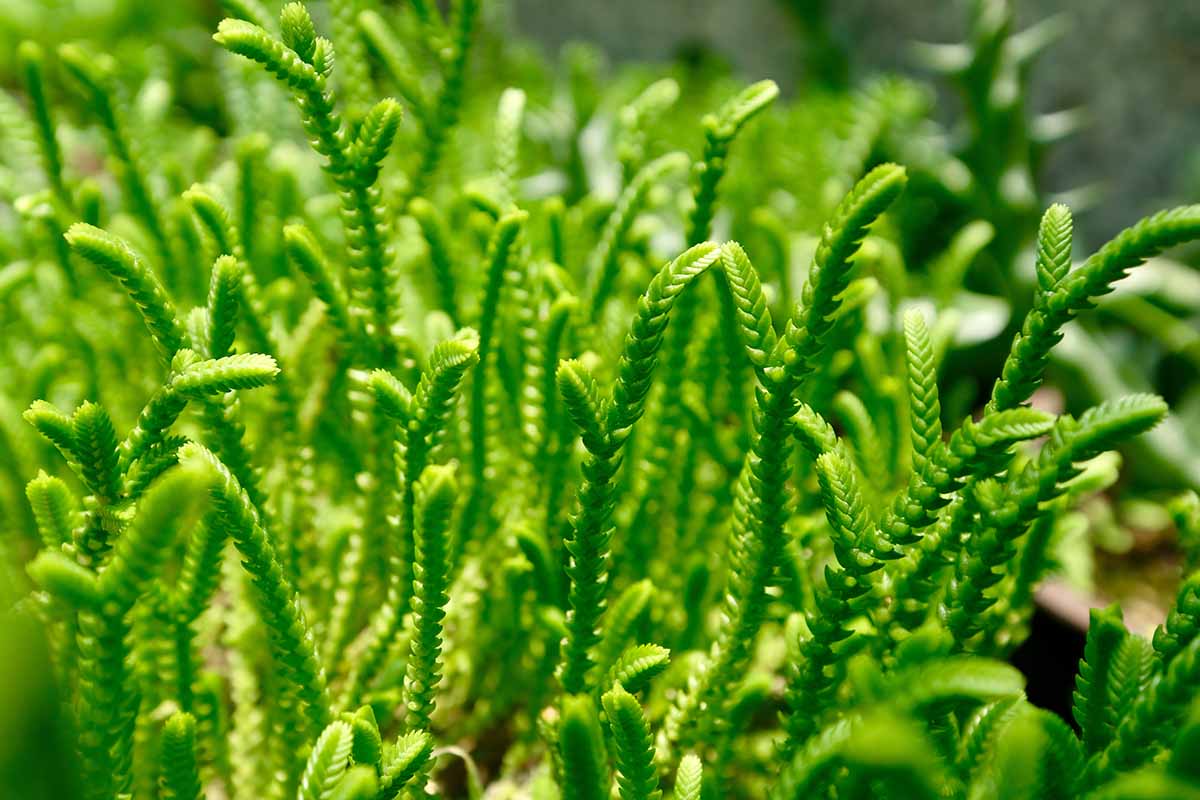
So I know C. muscosa is more tightly woven than the links on most watch chains, with its overlapping, tiny, bright green leaves stacked closely on four- to 12-inch stems.
One of the succulent’s alternate names is “rattail,” and maybe this is a more fitting moniker since the tails of these animals are hairless, and often scaly.
But by any name, this is a charming, almost delicate, trailing succulent that looks good in hanging baskets.
New growth extends upright at first, but once it reaches about four inches long, the stems start to bend under their own weight and cascade over the sides of pots.
Consider growing watch chains with more upright, colorful succulents like flaming Katy kalanchoe.
Outdoors in Zones 9 to 11, watch chains may produce yellow-green flowers in late fall or winter, and they make an unusual ground cover.
If it’s high time you added a trailing specimen to your succulent collection, you can find bare root watch chain plants or purchase one in a two-inch pot from Succulents Depot via Walmart.
13. Worm Plant
I’m into vermiculture, but I’d still be horrified to find an actual worm in my compost bin that looked like C. marnieriana, with its five- to nine-inch curved stems stacked with fleshy green disc-shaped leaves about three-quarters of an inch wide.
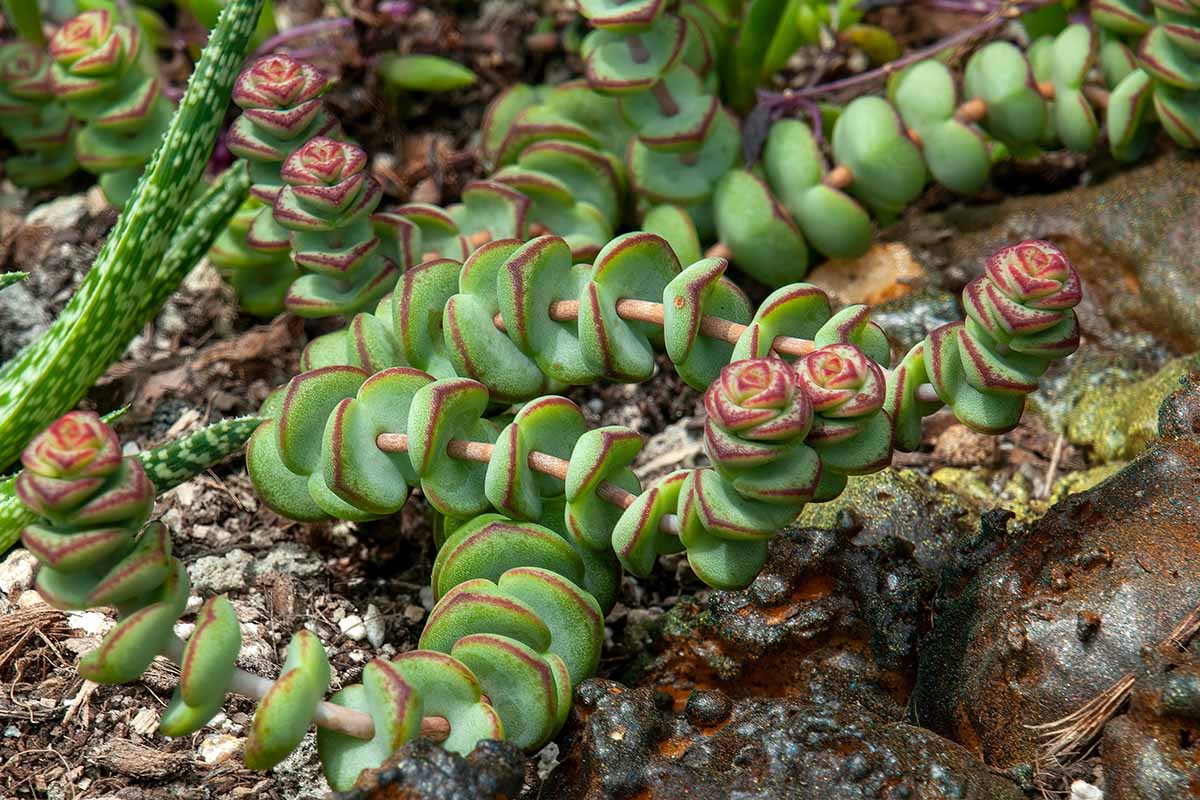
In a container or in a rock garden, though, worm plant is offbeat but attractive. If you prefer, you can call it by its alias, jade necklace – I think it would make a fun accessory for Mother Nature to wear on a girls’ night out.
The leaves might develop red margins in sufficient light. And while the stems start their growth in an upright manner, once they’re three or four inches long, they bend over a bit to create a trailing habit.
That makes these one of my top choices for hanging succulent baskets, planted alone or with other succulents in complementary colors.
Grown in a garden bed or border in Zones 10 to 11, where it is winter hardy, worm plant may produce an inflorescence with light pink, star-shaped blooms in winter.
Worm plants in are available in two-inch pots from The Next Gardener, Inc. via Walmart.
Amassing Crassulas Is a Delightful Pursuit!
I consider it a plus that the best-known species in the Crassula genus all have similar growing requirements while the many varieties available can look so different from each other.

This provides plenty for gardeners to choose from without having to memorize multiple plant profiles to keep each type healthy.
Which ones will you pick? Do you have a favorite you’d like to mention in the comments that we missed here? Reader input is always welcome, whether you’re sharing experience and tips or asking whatever questions are on your mind!
And if you’re looking for other intriguing succulents for your home or garden, check out these roundups next:
